News
EPJ C Highlight - Removing complexity layers from the universe’s creation
- Details
- Published on 23 July 2013

Understanding complexity in the early universe may require combining simpler models to interpret cosmological observations
Complicated statistical behaviour observed in complex systems such as early universe can often be understood if it is broken down into simpler ones. Two physicists, Petr Jizba (currently affiliated with the Czech Technical University in Prague), and Fabio Scardigli (now working at Kyoto University in Japan), have just published results in EPJ C pertaining to theoretical predictions of such cosmological systems’ dynamics.
EPJ D Highlight - The key to ion beams’ polarisability
- Details
- Published on 22 July 2013
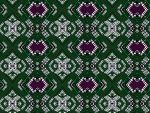
Polarisability for series of multi-electron ions is now available
Polarisability determines the force with which an inhomogeneous external electric field acts on the ions of an ion beam. However, it can be quite tricky to obtain accurate values for this force. Now, two German theoretical chemists, Volker Koch from Bielefeld University and Dirk Andrae from the Free University Berlin, have devised formulas providing the polarisability of atomic ions as a function of their total charge number. Their findings, about to be published in EPJ D, have implications for many applications, ranging from the use of ion beams for research purposes or as a source for dopant atoms in semiconductor manufacturing to the modelling of planetary and stellar atmospheres.
EPJ B Highlight - When diffusion depends on chronology
- Details
- Published on 18 July 2013

© Highways Agency
Study shows that the order of events taking place in complex networks may dramatically alter the way diffusion occurs
The Internet, motorways and other transport systems, and many social and biological systems are composed of nodes connected by edges. They can therefore be represented as networks. Scientists studying diffusion over such networks over time have now identified the temporal characteristics that affect their diffusion pathways. In a paper just published in EPJ B, Renaud Lambiotte and Lionel Tabourier from the University of Namur, Belgium, together with Jean-Charles Delvenne from the Catholic University of Louvain, Belgium, show that one key factor that can dramatically change a diffusion process is the order in which events take place in complex networks.
EPJ B Highlight - Semantics on the basis of words’ connectivity
- Details
- Published on 08 July 2013
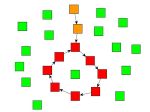
It is now possible to identify the meaning of words with multiple meanings, without using their semantic context
Two Brazilian physicists have now devised a method to automatically elucidate the meaning of words with several senses, based solely on their patterns of connectivity with nearby words in a given sentence – and not on semantics. Thiago Silva and Diego Amancio from the University of São Paulo, Brazil, reveal, in a paper just published in EPJ B, how they modelled classics texts as complex networks in order to derive their meaning. This type of model plays a key role in several natural processing language tasks such as machine translation, information retrieval, content analysis and text processing.EPJ B Highlight - Averting worse economic collapses
- Details
- Published on 01 July 2013
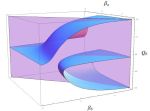
A new study shows how specific parameters can help us steer clear of tipping points in dynamic systems, such as entire economies.
By managing macro-economic parameters, scientists believe that—unlike previously thought—it is possible to steer an economy around irreversible changes in its complex dynamics and avert potential economic disasters. These findings, just published in EPJ B, stem from the theoretical work of Michael Harré and colleagues at the Complex Systems Group at the University of Sydney, Australia.
2012 Impact Factors
- Details
- Published on 25 June 2013
| Abbreviated Journal Title | ISSN | 2012 Total Cites |
Impact Factor |
5-Year Impact Factor |
Immediacy Index |
2012 Articles |
Cited Half-life |
Score |
Article Score |
|---|---|---|---|---|---|---|---|---|---|
| EUR PHYS J A | 1434-6001 | 3930 | 2.043 | 1.890 | 0.522 | 180 | 6.1 | 0.01385 | 0.807 |
| EUR PHYS J B | 1434-6028 | 7103 | 1.282 | 1.493 | 0.370 | 411 | 7.1 | 0.02194 | 0.638 |
| EUR PHYS J C | 1434-6044 | 11003 | 5.247 | 3.603 | 2.222 | 406 | 4.0 | 0.04614 | 1.521 |
| EUR PHYS J D | 1434-6060 | 4312 | 1.513 | 1.366 | 0.301 | 322 | 5.6 | 0.01691 | 0.597 |
| EUR PHYS J E | 1292-8941 | 3262 | 1.824 | 1.991 | 0.275 | 131 | 6.9 | 0.01008 | 0.863 |
| EUR PHYS J H | 2102-6459 | 77 | 2.375 | 2.375 | 0.594 | 32 | 0.00074 | 1.761 | |
| EUR PHYS J PLUS | 2190-5444 | 262 | 1.302 | 1.302 | 0.624 | 149 | 1.2 | 0.00107 | 0.472 |
| EUR PHYS J-APPL PHYS | 1286-0042 | 1343 | 0.710 | 0.766 | 0.176 | 170 | 5.3 | 0.00455 | 0.266 |
| EUR PHYS J-SPEC TOP | 1951-6355 | 1684 | 1.796 | 1.096 | 1.049 | 162 | 3.6 | 0.01304 | 0.539 |
EPJ Plus awarded its first Impact Factor
- Details
- Published on 25 June 2013
The release of the journal Impact Factors (IF) by Thomson Reuters confirms once more the position of EPJ as a premium provider of relevant and strictly peer-reviewed research in the physical sciences and beyond. We are especially proud of the fast-paced development of our newer journals: EPJ Plus, launched only in 2011, was already awarded its first IF (1.302) and EPJ H – Historical Perspectives in Contemporary Physics, launched in 2010, progressed from an IF of 1.182 in 2011 to an impressive 2.375 for 2012.
The full overview of 2012 EPJ Impact Factors is given here.
EPJ E Colloquium - Glassy dynamics and irreversible adsorption in thin films of soft matter
- Details
- Published on 25 June 2013
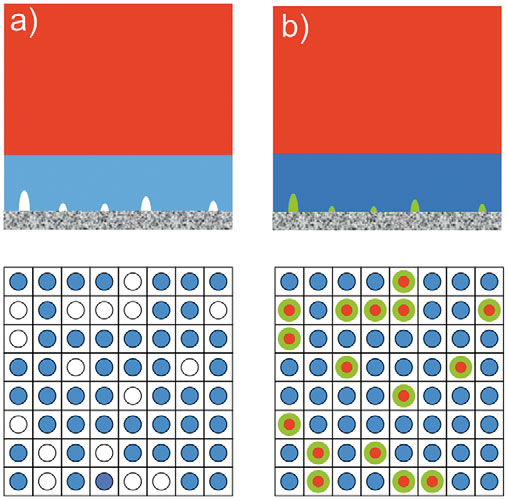
Thin films of liquids and polymers are interesting systems for those seeking to test glass transition theories and their prediction of a characteristic transition length scale of a few nanometers. The anomalous phenomena observed in some of these nano-confined films has greatly advanced our understanding of theoretical and experimental soft matter physics.
These films are treated as equilibrium systems where surfaces and interfaces introduce monotonous long-range mobility gradients. Considering finite size and interfacial effects provides an intuitive but oversimplifies picture that falls short of explaining many phenomena, such as enhancement of segmental mobility near an absorbing surface or long-lasting metastable states in the liquid.
EPJ celebrates 15th anniversary
- Details
- Published on 24 June 2013
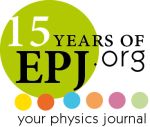
The European publishing partnership for physics, The European Physical Journal (EPJ), celebrates its 15th year in 2013.
During this time, EPJ has launched new open access titles, either in response to the emergence of new research fields at the interface between more established subjects, or to fill obvious gaps in the EPJ catalogue. After the early launches of EPJ Web of Conferences (the open access proceedings repository) in 2009 and EPJ Photovoltaics in 2010, 2012 witnessed the launch of EPJ Data Science. This year, three new journals are about to join them: EPJ Nonlinear Biomedical Physics, EPJ Techniques and Instrumentation and EPJ Quantum Technology. EPJ is also pleased to see EPJ C – Particles and Fields lined up for conversion into a fully open access journal under SCOAP3 (Sponsoring Consortium for Open Access Publishing in Particle Physics).
EPJ B Highlight - Predicting collective online behaviour
- Details
- Published on 18 June 2013
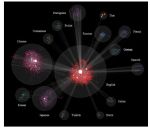
A team of Chinese scientists evaluates the impact of a website based on the interaction between its users with the entire Web
A new study shows that small websites, in terms of daily user flux based on number of clicks, have a disproportionally high impact when it comes to traffic generation and influence compared to larger websites. These findings, just published in EPJ B, have implications for estimating the value of sites and related advertising revenue. They result from the work of Lingfei Wu from the City University of Hong Kong and Jiang Zhang from the School of Management, at Beijing Normal University, China.





